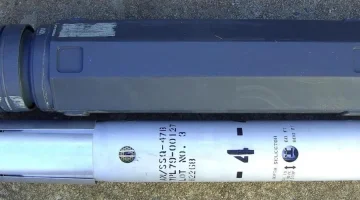- Views: 2K
- Replies: 11
The Indian Navy is embarking on a groundbreaking initiative to develop a deck-based Unmanned Combat Aerial Vehicle (UCAV) specifically designed for carrier operations. This ambitious project will leverage the Ghatak UCAV, currently under development for the Indian Air Force (IAF), and will be powered by the indigenous Dry Kaveri engine.
The Navy has initiated discussions with the Aeronautical Development Establishment (ADE), the agency responsible for the Ghatak UCAV's development, to explore the feasibility of modifying the platform for naval use. The Ghatak, originally conceived as a 13-ton stealth UCAV for deep-strike missions, will undergo significant modifications to meet the unique demands of carrier operations.
These modifications include reinforcing the undercarriage to withstand the stresses of carrier landings and incorporating a tail hook for arrested landings. These additions are expected to increase the UCAV's weight to approximately 14 tons or more.
ADE faces the challenge of maintaining the UCAV's performance and operational efficiency despite the weight increase. This involves optimizing fuel capacity, payload, and maneuverability to ensure the drone can effectively operate from a carrier deck.
The naval variant of the Ghatak will be powered by the Dry Kaveri engine, a non-afterburning version of the Kaveri engine. This choice is driven by the engine's fuel efficiency and lower infrared signature, which align with the UCAV's stealth and endurance requirements. However, further optimization will be necessary to adapt the engine for naval operations.
This initiative aligns with the Indian Navy's strategic vision to integrate unmanned systems into its aviation capabilities. The upcoming Indigenous Aircraft Carrier-II (IAC-II) is being designed with considerations for operating UCAVs, including Medium Altitude Long Endurance (MALE) UAVs.
The deck-based UCAV is envisioned to operate alongside manned aircraft, providing a versatile mix of capabilities, including deep strikes, surveillance, and potentially electronic warfare. This synergy is expected to enhance the Navy's strategic reach and combat effectiveness significantly.

